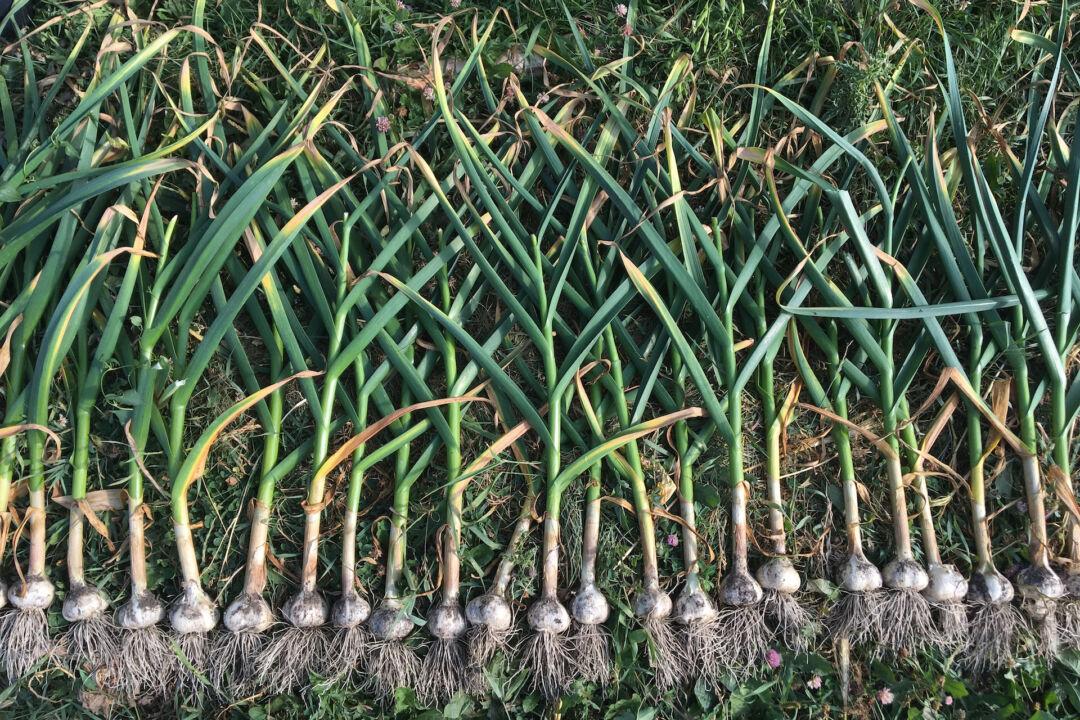The main purpose of a turnip is to feed hungry people, and the hakurei (pronounced like “samurai”) turnip is no exception. We aren’t talking about the kind of hunger when you wonder when dinner will be ready. To eat most turnips, you need more of a “Little House on the Prairie during an extra-long winter” level of hunger, when the carrots and onions and flour are gone and there is nothing else to eat. Turnips are dense, nutritious, and can outlast almost any other type of fresh vegetable in a non-refrigerated storage situation, but aren’t usually the tastiest root in the cellar.
Also known as the Tokyo Turnip, the hakurei was developed in the 1950s, when Japan was desperate to feed itself after being destroyed by World War II. The hakurei plant grows fast—about a month from sowing to harvest—and can handle a light frost and other forms of adversity. As a bonus, this bright white globe of a taproot has culinary properties that were previously unheard of among turnips, earning the hakurei the honorary title, “caviar of turnips.”
But really, calling the hakurei a turnip is like calling the jalapeño a fruit: technically true, and a cool party trick, but so what? We all still know a jalapeño isn’t really a fruit because it doesn’t taste like one. At the same time, many classic fruit characteristics, like sweetness and juiciness, are most present in the hakurei.
Hakurei translates to “esteemed companion,” a name that, like “salad turnip,” is entirely appropriate. The entire plant is edible, from green tip to root tip. You can do anything you want to a hakurei, including nothing. You don’t even need to peel its delicate skin. Each bite is a sip of sweet, buttery water, with a hint of horseradish.
They are often called salad turnips—two words you rarely see in the same sentence—because while most turnips must be cooked into edibility, hakurei are completely delightful when they are completely raw. Just eat it like an extra-juicy apple with no core.
They are great in salads for many reasons, including their crisp, juicy texture and the fact that they go very well with acid. Since they look like scallops, I like to feature hakurei turnips in a ceviche-like presentation, with a dressing and sliced onions and hot peppers, with or without actual fish.
But you can definitely cook the hakurei. Some people add them to the jus in the final half-hour of roasting a chicken. The hint of horseradish in its mild flavor makes it a great accompaniment to beef.
Most of the recipes I’ve encountered for cooking these next-level turnips remind the cook to use the stems and leaves, too. One involved blending cream cheese into a pot of gently boiled turnips and greens. I didn’t like the finished product that much, but the intermediate step of boiled turnips in a little bit of stock was pure, satisfying sustenance, decadent in its simplicity.
My favorite way to cook hakurei is in a miso butter with garlic, white wine, and a bit of sugar. The flavors of the hakurei and miso taste like they are made for each other, and with support from the other ingredients create a quick, easy, and glorious dish.
Getting your hands on some hakurei can be the hard part. But luckily, they are fast becoming a favorite among farmers and their clients at the farmers market. And if you can’t find any, you can always plant the seeds, all summer long. With food like this at your fingertips, you won’t be hungry, or malnourished.

Hakurei Turnips in Miso Butter Glaze
Salty, meaty, earthy, and sweet, with umami aplenty, it’s almost impossible to eat this gentle dish with your eyes open. However much you prepare, it won’t last long enough to see the inside of your Tupperware.- 1 bunch hakurei turnips (about 6 to 8 turnips)
- 2 tablespoons butter
- 2 teaspoons sugar
- 1 tablespoon miso
- 1/4 cup vermouth or white wine
- 2 cloves garlic, smashed and chopped coarsely
- 1 tablespoon sesame seeds
- Salt
Boil 2 quarts of water with 1 teaspoon salt for the greens. If you’re making soba noodles to serve it with, you can cook the greens in the leftover soba water. Either way, boil them for 5 minutes. Drain, plunge into a gallon or so of cold water, and drain again.
Add the butter, miso, sugar, and 1 cup water to a pan. Turn the heat to medium and stir as it heats. When it reaches a simmer, add the vermouth and garlic, and then the turnips. Allow the liquid to cook down and thicken, about 10 minutes. Season with salt if necessary—the miso may contribute enough. Flip the pieces and turn the heat down to low, so the turnips can brown but not burn. Garnish with sesame seeds, and serve with soba noodles or rice.





